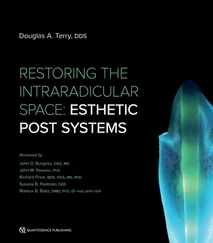Next-Generation Flowable Resin Composites
Since the inception of these initial formulations, a multitude of flowables have undergone continuous evaluation and improvement through scientific research and development. These “next-generation” flowable composites are being re-engineered as alternatives to conventional hybrid composites. The development of new technology continues to improve the ability of the scientist, manufacturer, and clinician to measure more effectively and therefore create a more ideal composite. However, the search continues for an ideal restorative material that is similar to tooth structure, is resistant to masticatory forces, has similar physical and mechanical properties to that of the natural tooth, and possesses an appearance akin to natural dentin and enamel. As the mechanical properties of a restorative material approximate those of enamel and dentin, the restoration’s longevity increases. 8 An ideal restorative material should fulfill the three basic requirements of function, esthetics, and biocompatability. 9 At present, no restorative material fulfills all of these requirements. However, nanotechnology used in dental applications may provide some of these solutions.
Restorative Material Selection
When selecting the proper material for a particular clinical situation, clinicians must consider two significant factors for the material’s anticipated use: the mechanical requirements and the esthetic requirements. In addition, other compounding variables that have the potential to influence the clinical behavior and material performance should be considered before restorative treatment. These variables include the placement technique, cavity configuration, anticipated margin placement, curing light intensity, tooth anatomy and position, occlusion, patients’ oral habits, and ability to isolate the operative field. 10 – 15 In view of these considerations, it is understandable that clinicians have uncertainties about the selection of biomaterials and the techniques needed to optimize the materials’ properties and achieve predictable, long-term results. A review of the mechanical and esthetic requirements for choosing a resin composite system for a specific clinical situation may provide insight into future selection and application.
Mechanical and esthetic requirements
In resin composite technology, the amount and size of particles represent crucial information for determining how best to use the composite materials. Alteration of the filler component remains the most significant development in the evolution of resin composites, 16 because the filler particle size, distribution, and quantity incorporated dramatically affect the mechanical properties and potential clinical success of resin composites. 17 In general, mechanical and physical properties of composites improve in relation to the amount of filler added. Many of the mechanical properties depend on this filler phase, including compressive strength and/or hardness, flexural strength, elastic modulus, coefficient of thermal expansion, water absorption, and wear resistance. 6

Fig 1-1These scanning electron micrographs provide a comparison of the size, shape, orientation, and concentration of filler components for specific conventional hybrid and flowable resin composite systems: (a) G-aenial Universal Flo (GC America); (b) G-aenial Flo (GC America); (c) G-aenial Sculpt (GC America); (d) Clearfil Majesty ES Flow Low (Kuraray); (e) Filtek Supreme Ultra Low (3M ESPE).
The esthetic appearance of the surface of a resin composite restoration is also a direct reflection of the particle size. Esthetic restorations require biomaterials to have optical properties similar to those of tooth structure. Because resin composite does not have hydroxyapatite crystals, enamel rods, and dentinal tubules, the composite restoration must create an illusion based on the way light is reflected, refracted, transmitted, and absorbed by dentin and enamel microstructures. Recreating a natural anatomical surface requires a similar orientation of enamel and dentin. Newer formulations of resin composites possess optical properties that render the tooth polychromatic. In addition, the filler particle sizes and distribution can influence the color and esthetics of a restoration through a phenomenon called the double-layer effect, also known as the chameleon effect or blending effect . 18 – 20 This mechanism applies to the relationship between natural tooth structure and esthetic materials. It occurs when a composite material is placed as a restoration and diffused light enters from the surrounding hard dental tissues; when emitted from the restoration, the shade is altered by absorbing color from the tooth and the adjacent teeth. This color alteration depends on the scattering and absorption coefficients of the surrounding hard dental tissues and restorative material, which can produce an undetectable color match by blending with tooth color. 21 Furthermore, the surface quality of the composite restoration is influenced by the composition and the filler characteristics of the composite. 22 , 23 Newer formulations of nanocomposites have altered filler components with finer filler size, shape, orientation, and concentration, improving not only their physical and mechanical properties but also their optical characteristics ( Fig 1-1). These universal resin composite systems allow the composite to be polished to a higher degree, which can influence color integration between the material and the tooth structure.
Current Developments in Nanotechnology with Resin Composite
Nanotechnology, or nanoscience, 24 refers to the research and development of an applied science at the atomic, molecular, or macromolecular level, also known as molecular engineering/manufacturing. The prefix nano- is defined as a unit of measurement in which the characteristic dimension is one-billionth of a unit. 25 Although the nanoscale is small in size, its potential is vast. There has been significant advancement in the world of small. Small has become a common research theme for building nanomotors, nanorobots, nanocircuits, and nanoparticles. Recent advances by scientists and engineers in manipulating matter at this small magnitude indicate potential applications of this nanoscience in every arena of our economy, including telecommunications, aerospace, computers, textiles, homeland security, microelectronics, biomedicine, and dentistry. 25
In dentistry, nanotechnology 24 may provide resin composites with filler particles that are dramatically smaller in size and that can be formulated in higher concentrations and polymerized into the resin system with molecules designed to be compatible with polymers and provide unique characteristics (physical, mechanical, and optical). In addition, optimizing the adhesion of restorative biomaterials to the mineralized hard tissues of the tooth is a decisive factor for enhancing the mechanical strength, marginal adaptation, and seal of the adhesive restoration, as well as improving its reliability and longevity. Currently, the particle sizes of many of the conventional composites are so dissimilar to the structural sizes of the hydroxyapatite crystal, dentinal tubule, and enamel rod that a potential exists for compromises in adhesion between the macroscopic (40 nm to 0.7 μm) restorative material and the nanoscopic (1 nm to 10 nm) tooth structure. 26 However, nanotechnology has the potential to improve this continuity between the tooth structure and the nanosized filler particle and to provide a more stable and natural interface between the mineralized hard tissues of the tooth and these advanced restorative biomaterials.
Читать дальше












